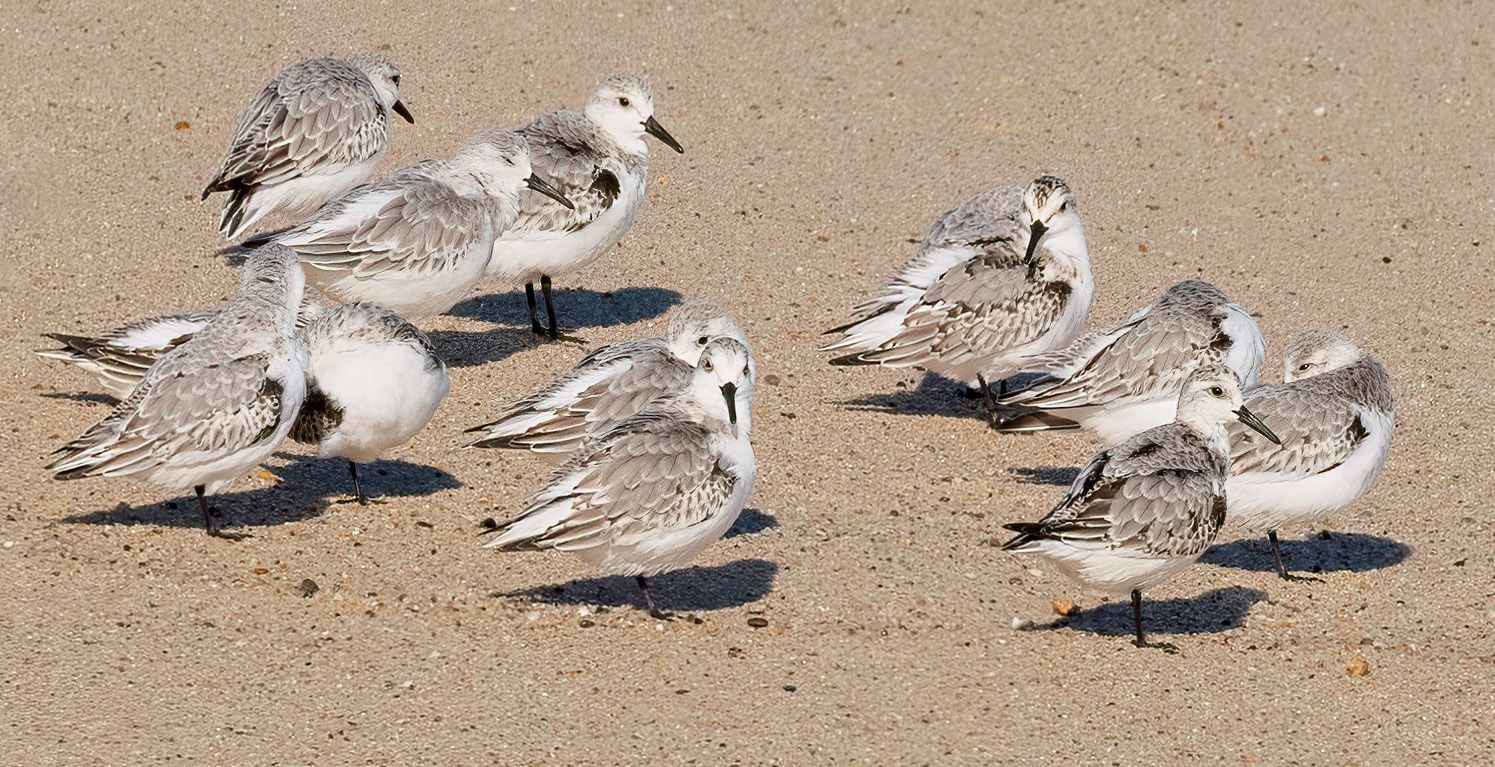Keep Calm and Bird On: July 2023
“If you don’t look, you don’t see. You have to go and look.”
-Edith Andrews

On Nantucket July means summer is just getting under way. But in the Arctic, the post-solstice return of darkness is already noticeable. And this means the beginning of shorebird migration. Didn’t we just see them, enroute to northern nesting grounds? But the short Arctic season means they only get one chance to raise young, and they must do it quickly. The shift in daylight means that some of the bird world’s longest-distance migrants are already thinking about heading south.
Some pause only briefly on our beaches; some stay all winter. They don’t necessarily all move at once. Non-breeders may lag behind on wintering grounds. Some may have been delayed by bad weather, lack of food, or injury; others await maturity before attempting the rigors of raising young.
Sanderlings are perhaps everyone’s favorite shorebird; they are so active, running back and forth between waves, almost never caught. We are used to seeing them in winter grey and white, but in early summer a few might still be sporting the rufous feathers of the breeding season. Their black legs churn like wind-up toys as they run; their black bills disappear as they probe the damp sand. They are finding amphipods, small crabs, and marine worms. Oddly, they can cast a pellet with the indigestible bits as owls do. They are not averse to insect foods; in a pinch they can eat plant material.
They feed together in flocks, starting with smaller numbers, six to perhaps a dozen, but as the season progresses flock size increases. In July, they are just returning from Canadian islands in the high Arctic. They are heading for sandy beaches all over the world. On the east coasts in the Americas we may see them anywhere from Massachusetts to Tierra del Fuego.
Photo by Tom Griswold
Recent Posts




